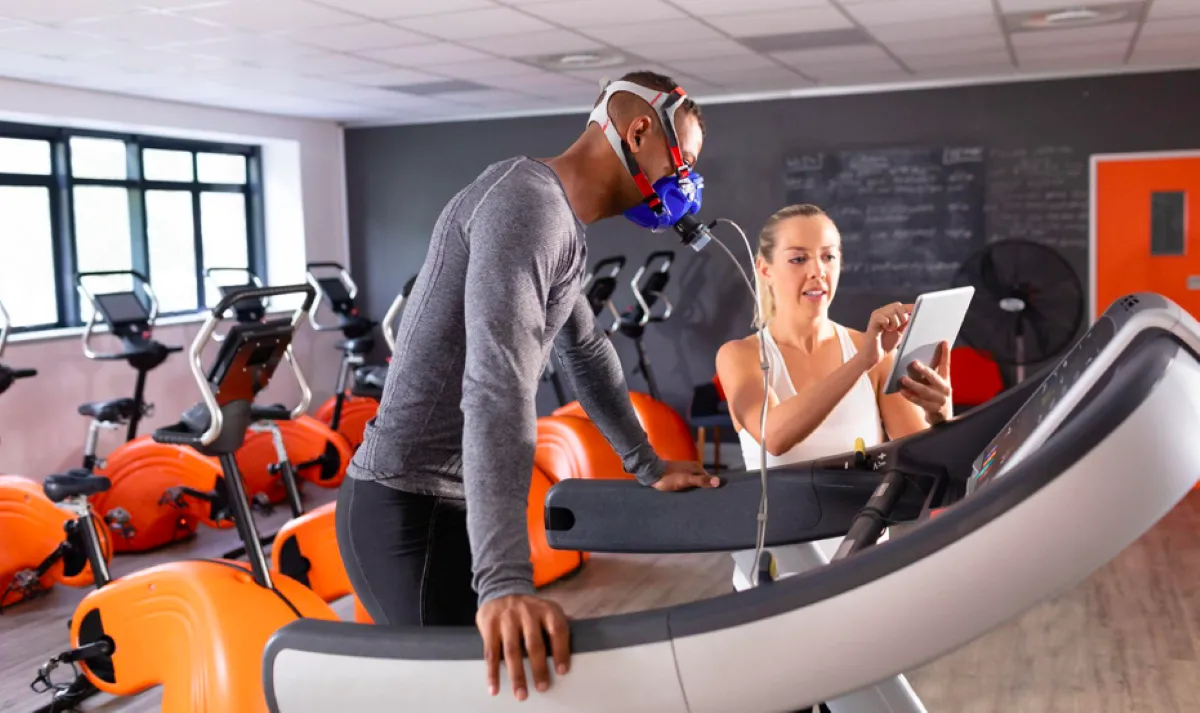Is Exercise Science A Stem Major?
Exercise science is a popular field of study for students interested in health, fitness, and the human body. But with its blend of science and practical coursework, there is often debate around whether exercise science qualifies as a STEM major.
If you’re short on time, here’s a quick answer: Exercise science is generally considered a STEM field because of its heavy emphasis on science, research, and quantitative analysis. However, some argue it falls between STEM and health sciences.
Defining Exercise Science
Exercise Science is a multidisciplinary field that focuses on the study of human movement and the effects of physical activity on the body. It encompasses a wide range of scientific disciplines, including physiology, anatomy, biomechanics, kinesiology, nutrition, and psychology.
Exercise Science professionals are dedicated to understanding how the human body responds and adapts to physical activity, and how exercise can be used to improve health, prevent disease, and enhance athletic performance.
Focus on Human Movement
Exercise Science places a strong emphasis on the study of human movement. This includes the analysis of how muscles, bones, and joints work together to produce different types of movements, such as walking, running, and lifting weights.
By understanding the mechanics of human movement, Exercise Science professionals can develop effective exercise programs that optimize performance and reduce the risk of injuries. They also study the impact of different types of exercise on various populations, such as children, older adults, and individuals with chronic diseases.
Integrates Multiple Sciences
Exercise Science is unique in that it integrates multiple scientific disciplines. Professionals in this field draw knowledge and concepts from biology, chemistry, physics, and even mathematics to understand the complex interactions between the human body and physical activity.
For example, they may use principles of biomechanics to analyze the forces acting on the body during exercise or apply principles of physiology to study how the cardiovascular and respiratory systems respond to different types of physical activity.
Moreover, Exercise Science professionals often collaborate with experts from other fields, such as nutritionists, psychologists, and physical therapists, to provide comprehensive care and guidance to individuals seeking to improve their health and fitness.
This interdisciplinary approach allows for a more holistic understanding of human movement and the development of evidence-based exercise interventions.
The Meaning of STEM
STEM, which stands for Science, Technology, Engineering, and Math, is an acronym that has gained significant popularity in the education and career fields. STEM education focuses on these four disciplines, which are considered to be the foundation of innovation and problem-solving in today’s world.
Science, Technology, Engineering, Math
When we talk about STEM, we are referring to a wide range of fields and industries. Science encompasses a vast array of subjects, from biology and chemistry to physics and environmental science. Technology refers to the development and use of various tools, software, and systems that enhance our lives and improve efficiency.
Engineering involves designing and creating solutions to real-world problems, whether it be designing bridges, developing new medical devices, or constructing sustainable buildings. Finally, math provides the language and framework for understanding and analyzing data, patterns, and relationships.
Exercise science, although not traditionally considered part of the STEM fields, can certainly be classified as a STEM major. It combines elements of biology, chemistry, physics, and mathematics to understand how the human body responds to exercise and physical activity.
Exercise scientists study topics such as biomechanics, physiology, nutrition, and the effects of exercise on overall health and well-being.
Emphasis on Innovation
One of the key aspects of STEM education and careers is the emphasis on innovation. STEM fields are constantly evolving, and professionals in these fields are at the forefront of creating new technologies, solving complex problems, and pushing the boundaries of what is possible.
Exercise science is no exception. As our understanding of the human body and the benefits of physical activity continues to grow, exercise scientists play a crucial role in developing innovative exercise programs, designing cutting-edge fitness equipment, and finding new ways to optimize athletic performance.
The field of exercise science is constantly evolving, with new research and discoveries shaping the way we approach exercise and physical fitness.
By incorporating elements of science, technology, engineering, and math, exercise science is indeed a STEM major. It combines the principles of these disciplines to explore and understand the intricate workings of the human body and how it responds to exercise, ultimately contributing to the advancement of our knowledge in the field of health and wellness.
For more information on exercise science as a STEM major, you can visit reputable websites such as American College of Sports Medicine (ACSM) or National Academy of Sports Medicine (NASM).
Scientific Nature of Exercise Science
Exercise Science is considered a STEM (Science, Technology, Engineering, and Mathematics) major due to its strong scientific foundation. It combines various scientific disciplines to understand how the human body responds and adapts to physical activity.
Let’s explore some of the key scientific aspects of Exercise Science.
Anatomy and Physiology
Anatomy and Physiology are fundamental components of Exercise Science. This field focuses on the structure and function of different body systems, such as the musculoskeletal, cardiovascular, and respiratory systems.
Understanding the intricacies of these systems helps exercise scientists assess an individual’s physical capabilities and design appropriate exercise programs.
For more information about Anatomy and Physiology in Exercise Science, you can visit this website.
Biomechanics
Biomechanics is another crucial aspect of Exercise Science. It involves the study of how forces act on the body during movement. By analyzing biomechanics, exercise scientists can assess movement patterns, identify potential injury risks, and optimize performance.
Biomechanics also plays a role in designing exercise equipment and understanding the impact of different surfaces on physical activity.
To delve deeper into the field of Biomechanics in Exercise Science, you can refer to this research article.
Research Methods
Research methods are a vital component of Exercise Science. Exercise scientists conduct research studies to investigate various aspects of physical activity, such as its effects on health, performance, and injury prevention.
They use scientific methods and statistical analysis to gather and interpret data. Research findings contribute to the development of evidence-based exercise guidelines and interventions.
For more information on research methods used in Exercise Science, you can refer to this scholarly article.
Practical Aspects of Exercise Science
Strength and Conditioning
One of the practical aspects of exercise science is strength and conditioning. This field focuses on improving athletic performance through the development of strength, power, and endurance. Strength and conditioning professionals work with athletes of all levels, from high school teams to professional athletes, to design and implement training programs that optimize their physical abilities.
Strength and conditioning programs typically involve a combination of resistance training, cardiovascular exercise, and flexibility training. These programs are tailored to the specific needs and goals of the athlete, taking into consideration their sport, position, and individual strengths and weaknesses.
By improving strength, power, and endurance, athletes can enhance their performance and reduce the risk of injury.
According to a study published in the Journal of Strength and Conditioning Research, strength and conditioning programs have been shown to significantly improve athletic performance. Athletes who undergo regular strength and conditioning training experience greater gains in strength, power, and speed compared to those who do not engage in such programs.
Sports Medicine
Another practical aspect of exercise science is sports medicine, which focuses on the prevention, diagnosis, and treatment of injuries related to physical activity. Sports medicine professionals, including athletic trainers and physical therapists, play a crucial role in helping athletes recover from injuries and return to their sport.
These professionals work closely with athletes to develop personalized rehabilitation programs that promote healing, restore function, and prevent future injuries. They utilize various treatment modalities, including therapeutic exercises, manual therapy, and modalities such as ultrasound and electrical stimulation.
A study published in the British Journal of Sports Medicine found that sports medicine interventions, such as physical therapy and rehabilitation programs, significantly reduce the time it takes for athletes to recover from injuries and return to play.
This highlights the importance of sports medicine in the field of exercise science.
Health Promotion
Health promotion is another practical aspect of exercise science that focuses on improving overall health and well-being through physical activity and healthy lifestyle choices. Exercise science professionals who specialize in health promotion work in various settings, including corporate wellness programs, community health organizations, and healthcare facilities.
These professionals design and implement programs that promote physical activity, healthy eating, stress management, and other lifestyle behaviors that contribute to overall wellness. They educate individuals and communities on the benefits of exercise and provide guidance on how to incorporate physical activity into daily routines.
According to the Centers for Disease Control and Prevention, regular physical activity is associated with numerous health benefits, including reduced risk of chronic diseases such as heart disease, diabetes, and certain types of cancer.
Health promotion efforts in exercise science play a vital role in helping individuals adopt and maintain a physically active lifestyle.
Classifying Exercise Science
Exercise Science is a multidisciplinary field that combines aspects of biology, physiology, anatomy, and biomechanics to understand and study how the human body responds and adapts to physical activity.
It focuses on the scientific principles behind exercise and its effects on the body, including improving performance, preventing injuries, and enhancing overall health and well-being.
STEM Classification
STEM stands for Science, Technology, Engineering, and Mathematics, and it typically includes majors such as biology, chemistry, physics, computer science, and engineering. While Exercise Science may not fit directly into one of the traditional STEM categories, it incorporates elements of science, biology, and physiology, making it a relevant and valuable field of study within the STEM framework.
Exercise Science students engage in rigorous scientific research, conduct experiments, analyze data, and apply scientific principles to real-life scenarios. They study topics such as exercise physiology, biomechanics, nutrition, psychology, and the effects of physical activity on various populations.
This hands-on approach aligns with the core principles of STEM education, emphasizing critical thinking, problem-solving, and a strong foundation in scientific methodology.
Interdisciplinary Nature
Exercise Science also has strong ties to other fields, such as kinesiology, sports medicine, and physical therapy. It intersects with these disciplines to provide a comprehensive understanding of human movement and physical activity.
This interdisciplinary approach allows Exercise Science graduates to pursue various career paths, including fitness trainers, exercise physiologists, sports coaches, and researchers.
While Exercise Science may not fit neatly into the traditional STEM classification, it shares many similarities and overlaps with other STEM fields. Its focus on scientific inquiry, data analysis, and problem-solving makes it a valuable and relevant area of study within the STEM framework.
It offers students the opportunity to explore the complexities of human movement, health, and performance, and contribute to advancements in the field. So, while it may not have the same recognition as more traditional STEM majors, Exercise Science is undoubtedly a valuable and important field of study.
Conclusion
In summary, while debate exists, exercise science is generally categorized as a STEM discipline due to its grounding in scientific knowledge and quantitative research methods. However, its application to health promotion and practical skills also differentiate it from pure science fields.
Ultimately, exercise science encompasses the best of both worlds – rigorous STEM fundamentals with real-world relevance. This makes it an attractive and versatile major for students interested in science, medicine, health, and human performance.







